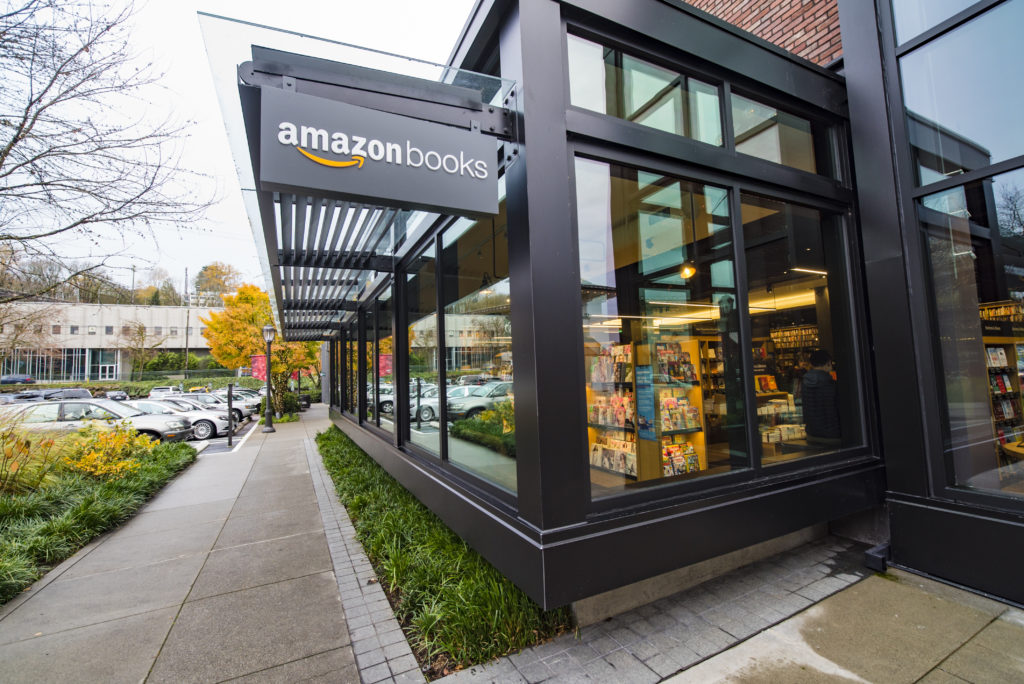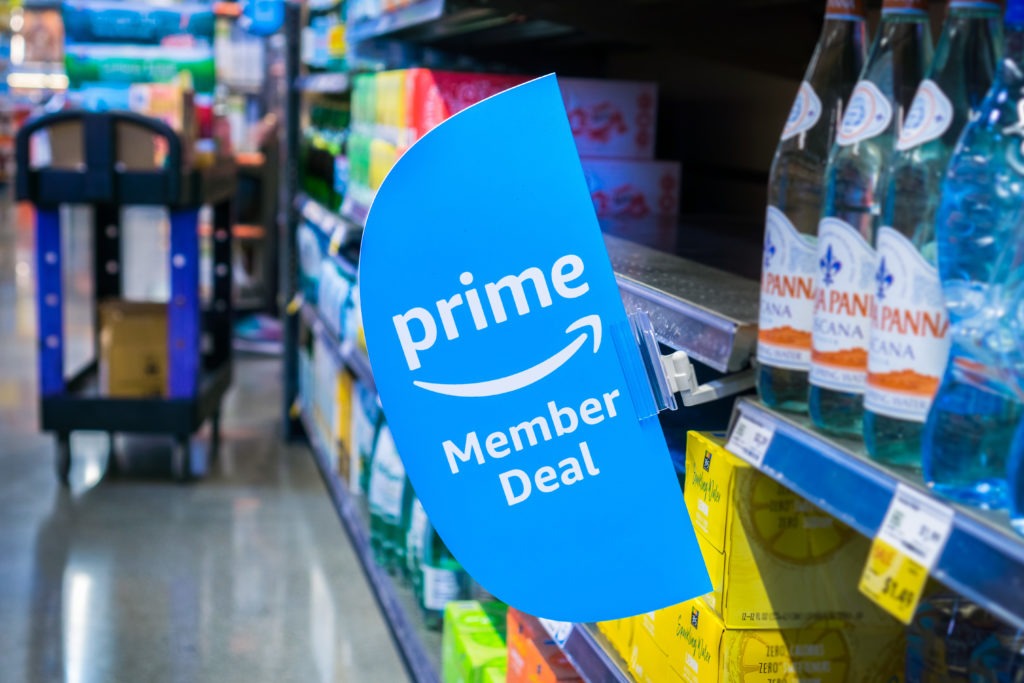
If today’s blog post title has a certain “man bites dog” feel to it, you’re not alone.
After all, digital companies don’t have physicality, brick and mortar, or parking lots. That’s the beauty of that huge number of burgeoning e-businesses. They don’t require the same investments in real estate or people – thus, they are scalable in today’s web-driven economy.
Except that a growing number of these e-commerce companies are locating, planning, and building physical stores. Wayfair is the newest in this category to expand into a real, retail location.
They are still, in fact, a digital company. A story in MediaPost by Sarah Mahoney talks about how Wayfair is now mixing technology with retail to set its brand apart. They call it Mixed Reality – or MR – a way for web shoppers to pull items from Wayfair’s inventory right into their homes – to determine how different styles, colors, and fabrics will look in context.
But despite this investment in digital magic, Wayfair is set to start construction on a 20,000 square-foot store in Kentucky (near one of its distribution centers).
And they’re not alone. Amazon has already built a variety of physical stores, not to mention its Whole Foods chain where Amazon Prime discounts are prominently displayed.
But even some of the littler guys in the e-commerce space are getting into the retail game, including Warby Parker (prescription glasses and sunglasses) and Bonobos (men’s clothing).
Then there’s Casper. You’ve no doubt seen TV commercials for this e-commerce mattress upstart. And while they’ve made a mark in the industry against heritage brands like Serta, Sealy, or Simmons, they’re set to open 200 physical stores by 2021.
So, what gives? What are these e-commerce, digital retailers thinking?
In much the same way broadcasters are trying to get their arms around their industry, e-tailers are going through some of the same machinations. In radio, terrestrial may be the foundational platform, but every company keen on survival is moving at a rapid pace to develop digital content: podcasts, social pages, web content, Alexa skills, and mobile apps.
radio, terrestrial may be the foundational platform, but every company keen on survival is moving at a rapid pace to develop digital content: podcasts, social pages, web content, Alexa skills, and mobile apps.
At the core of that conversation is the issue of digital transformation. How can broadcast radio companies redefine and reshape themselves in an era where content is now being distributed on multiple platforms?
Yet, companies like Amazon, Wayfair, and Casper seem to be devolving – moving from digital to analog – or retail.
That’s because they don’t think of themselves as e-commerce businesses.
They think of themselves as brands.
And the really good ones have their chops by intelligently and strategically marketing themselves – oftentimes using traditional media, like broadcast and cable television to build their brand equity.
Wayfair is a great case in point. They are far more than a furniture retailer. They are marketing a lifestyle, a new way of thinking about home decor, and they are using traditional marketing tools to build a strong, powerful, and highly familiar brand.
And that includes basic jingles (everyone in radio knows how those little “songs” can get in your head) as well as catchy slogans like “Game-changer” to keep themselves top-of-mind among consumers.
Shoppers for books, furniture, beds, and even men’s clothes aren’t necessarily loyal to shopping in stores or with a few clicks of a mouse. They are loyal to brands that resonate with them. And that’s precisely what these e-commerce-companies-turned-retailers are pulling off.
No matter your business – whether its broadcasting, streaming, podcasting, or dashboards – it’s about brands. Build a great one, and there’s truly no stopping strategists from creating great experiences in new places.
Let’s not forget that one of the biggest, richest, and most influential companies in the world – Apple – has not only excelled in the e-commerce space, their stores are retail showplaces that have redefined how we shop for computers, mobile devices, watches, and other tech accessories.
 These interesting moves by e-companies like Casper, Wayfair, and Amazon are reminders to those of us in radio that if we don’t build, market, and grow great brands, all the digital extensions in the world won’t amount to a hill of 1’s and 0’s.
These interesting moves by e-companies like Casper, Wayfair, and Amazon are reminders to those of us in radio that if we don’t build, market, and grow great brands, all the digital extensions in the world won’t amount to a hill of 1’s and 0’s.
Distribution aside – physical stores, websites, pop-ups, or whatever – great brands make us want to own them or participate in them wherever we go and on whatever platforms we use.
It is precisely why podcasts are increasingly going well beyond audio, and materializing as websites, events, apps, and merchandizing. A great brand can be enjoyed by fans in many different places.
And these e-commerce companies are also discovering another lesson radio stations are well aware of – the value of interacting with customers (listeners) face-to-face and truly understanding their local marketplace. A consumer-facing brand provides value that simply isn’t there on a website or smartphone.
Great companies can start online – and thrive. For a while. But to truly connect with people means more than entering a credit card number, a security code, and clicking “submit.” How much richer has the Apple experience become because of their iconic stores? Will these other brands make better connections because of these brick and mortar extensions?
Of course, this is a reminder radio content needs to be available not just terrestrially, but on digital outlets that matter to consumers, just as e-commerce brands see a need – and an opportunity – to extend their online wares to the retail sector.
In the next eight weeks, we’re going to see retail turbocharged on the political front as candidates in all 50 states take to the airwaves, Facebook, Google, and other advertising vehicles. But a big part of their push to get votes will take place in a very consumer-facing way. Most will pursue a vigorous “retail politics” strategy, getting in front of as many voters as possible. That’s because face-to-face encounters matter – they move elections, they sell mattresses, and they generate ratings.
Many years ago, we coined the phrase “retail radio” as a way of illustrating the importance of a consumer-facing street presence. Yes, it’s an ongoing theme in this blog – and for good reason. Retail matters, and the best brands – in radio, furniture, and smartphones – are well aware of that consumer tenet.
It’s not just about the quality of your stream, your mobile app, your festval, or your t-shirts and caps.
It’s about your brand.
- What To Do If Your Radio Station Goes Through A Midlife Crisis - April 25, 2025
- A 2020 Lesson?It Could All Be Gone In A Flash - April 24, 2025
- How AI Can Give Radio Personalities More…PERSONALITY - April 23, 2025




So true. If 2/3rd if Radio listening is digital, how can the industry still avoid paying royalties? Please don’t crush me for asking … The way I see it is that modern Radio has an unlimited digital reach and existing physical local presence. That’s the model most firms now strive for, as mentioned.
Radio is actually ahead of streamers and beamers in terms of the ability for modern day monetization, relationships and being ‘true’ Brand Ambassadors. Maybe the industry has cut too many jobs instead of embracing their local power with that required human touch.
Clearly that human touch is something that even the techiest are incorporating in their game plans. Thanks, Josh.